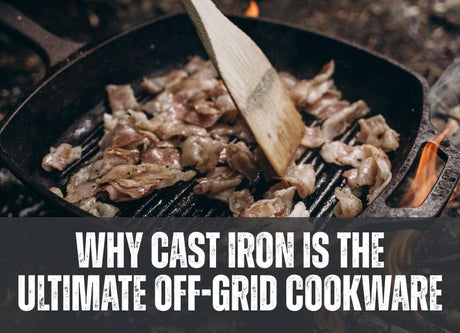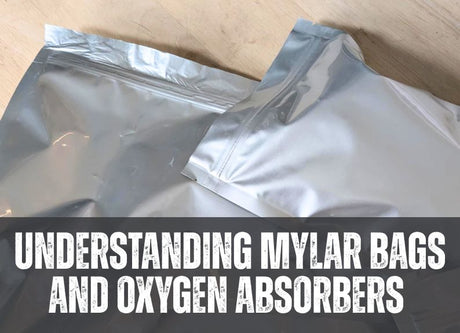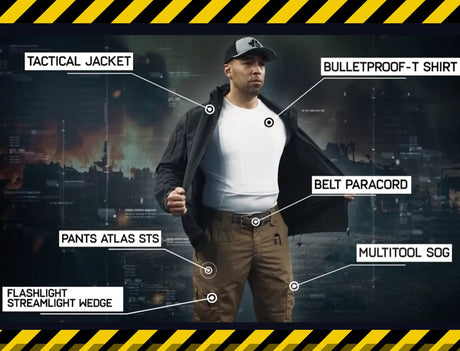Learning to tie knots might seem inconsequential, but having the skill to tie multiple knot styles can save your life. From knots that can help you climb a cliff face or lower an injured companion to safety to knots to build shelters and hang food out of reach. Knot tying is an underrated preparedness skill that can help you thrive in the backwoods.
The Bowline knot is versatile for outdoor survival.
Pronounced ‘boh-lyn,’ this knot is the king of all knots. If you need to hoist your foot into a tree to protect from bears or tow someone who has fallen in ice, this non-slip knot can be an extremely useful knot to tie quickly and efficiently. It’s a great anchor if you need to move down a cliff face safely or traverse some tricky terrain, and it can help you anchor objects, like a bed or shelter, to a tree safely and easily. The Bowline can be doubled or tripled depending on the need.

To tie this knot, start by forming a 𝇌 shape at the end of the rope slightly larger than the size of the loop you want to end up with. On the side of the U opposite the end of the rope, form a loop 🜻 facing the end of the rope with the working side of the loop sitting on top. Feed the end of the rope up through the loop, around behind the long end of the rope and back down through the loop. Pull the two ends that come through the loop to tighten.
If you are using this rope to rescue someone, it is critical that you tie a safety knot. The Bowline knot comes easily undone when unloaded (no weight), and you will need to secure it. To secure the Bowline knot, use a stopper knot or double overhand knot, and tie it as close to the knot as possible to prevent slipping. To tie a double overhand, leave an excess of rope from the end of the rope you used to make your loop, wrap it around the rope, as close to the knot as possible, forming an X and loop the end through the X from the bottom and pull tightly to secure.
Secure your shelter with a Clove Hitch knot.
If you have a trap in the water, a boat or canoe, securing guylines on your tarp or tent, or even securing your pet to a tree or post, a Clove Hitch knot is your go-to. The Clove hitch also allows you to easily adjust tension, making it great for constructing an emergency shelter with some paracord and a little grit. You can secure this knot, if you need it to perform under duress, by adding the Double Overhand knot or by using a stake with a flat top to prevent the knot from slipping off.

To tie the Clove Hitch, think of a pretzel. Form one loop where the rope goes over, and hold while you form a second loop the same way. Crisscross the loops with the second one under the first to form a pretzel, put your stake through the centre loop, and pull to tighten.
The Square knot can help you efficiently pack your bug-out bag.
The Square knot, also known as a Reef knot by sailors, is a useful knot to know if you’re traversing water with a sail or as a great way to secure your rope to yourself while you bug out. Using a mountaineer’s coil or a butterfly coil, you can transport a lot of rope efficiently.

Some people will use this knot to attach two lengths of rope; we caution against this, especially if they are two different kinds of rope. This knot forms an insecure bend that is liable to come undone. As a rule, you should never trust anything to a Square knot, especially not your life.
To tie this knot, take one end of the rope in your left hand and a length of rope in your right hand. Cross the left over the right, forming an X so that your rope ends are in the opposite hand. Then, put the right over left, forming an X and pull tight.
If you need to join two lengths of rope, use a Sheet Bend.
A Sheet bend is great when you need to securely attach two lengths of rope, even if they are different thicknesses or types. This knot can be used to repair a broken line, haul a large load, carry gear up a cliff or steep embankment, and more. You can also use it to secure a tarp of shelter with rope and a metal grommet.
To tie this knot, form a 𝇌 shape with the thicker rope (if applicable) and hold. The second rope ties into the loop by first forming a loop behind the first loop and then wrapping the longest end of the thinner or second rope over itself, forming an X and pulling it through the loop. The end of the second rope will be left, and you can secure it further by using a Double Sheet Bend or by tying a Double Overhand knot.

In the backcountry? A Double Fisherman’s knot can keep you safe.
A Double Fisherman’s knot is a valuable tool for tying two separate pieces of rope together in a secure manner. Often used in rock climbing and as an essential component of the Prusik Hitch, this knot is safe and extremely useful for any outdoor survivalist.

Take your two ropes and have the ends of the ropes facing each other. Slide the ropes together so they remain parallel to each other until you reach about a forearm length. Take the first rope and loop it twice around the other, forming an X shape. Loop the first rope under the X loops and pull taut. Repeat this with the second rope around the first. Pull the long ends of the rope so that each of the knots pulls tightly together.
The Prusik Hitch is essential to your bushcraft survival.
In mountainous or glacial terrain, especially where emergency help is far away, or in a post-collapse setting, completely unavailable, the Prusik Hitch can be used to repel into or lift people out of caves, pits, crevices, and other tricky and dangerous terrains.

First, tie a shorter length of rope in a double fisherman’s knot so that you have a closed-loop. Take your loop and the rope you will use for repelling, and lay the loop flat with the knot side running parallel to the second rope. Take the knot end of the loop and wrap it around the second rope and through itself; repeat this two more times; pull on the knot end of the loop to tighten around the second rope as tightly as possible is ideal. You can now use a carabiner on the loop as an adjustable repelling tool to safely assist you or help another.
Mastering your knot tying is a critical skill for any outdoor survivalist.
Having these skills is crucial to your success in surviving any outdoor situation. The more skills that you have in your arsenal, the easier it will be to survive. In addition, your knowledge will prepare you for any emergency and help you keep calm under pressure. Learning how to tie knots for every scenario will help you expend less energy, rescue others, build shelters confidently, and keep your food stores safe from wildlife and humans alike.










